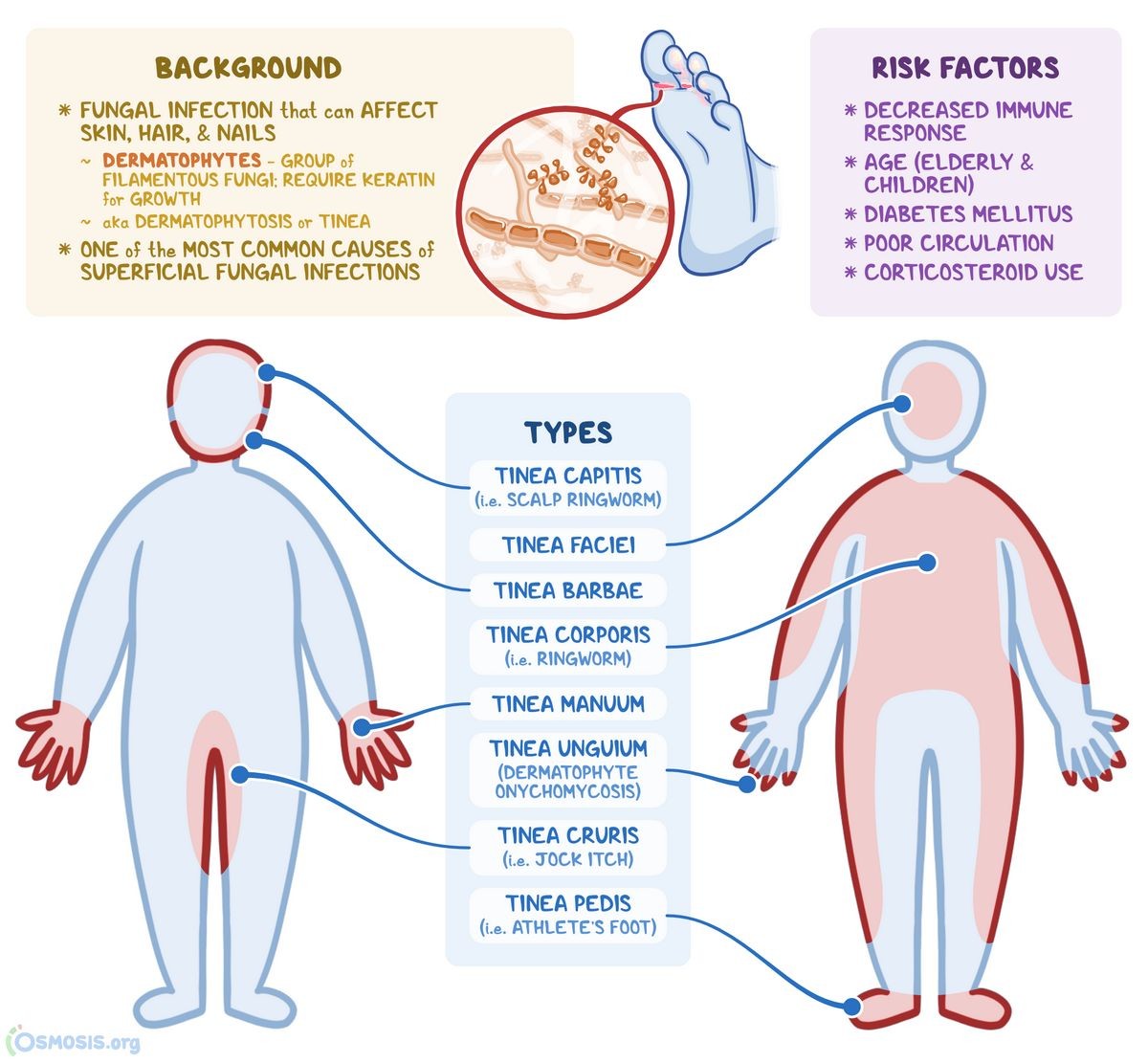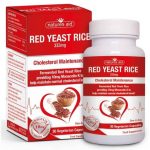
Contents
4 Types of Fungal Infection
A fungus is a microscopic organism found everywhere, including in water, air, and on surfaces, including the human body.
Thousands of fungus varieties exist in the environment, but only a few cause human infections. When a fungus settles on the skin, it can cause itching, redness, and irritation.
4 most common superficial fungal infections
Athlete’s foot fungal infection
Athlete’s foot, also known as ringworm of the foot, is a fungal infection of the skin on the bottom of the foot. It is caused by a dermatophyte and can be transmitted through direct contact with infected individuals, animals, or contaminated objects, such as shared towels, locker room floors, or soil.
The main causes of athlete’s foot are Trichophyton rubrum, T interdigitale, and Epidermophyton floccosum. Although it can affect anyone, it is more common in men than in women and rare among children.
6 symptoms of athlete’s foot
- Itch and white patches between toes
- Redness of the skin
- Sore and flaky patches on the skin
- Cracked and bleeding skin under the feet
- Affected soles with fluid-filled blisters
- Possible toenail fungal infection if left untreated or severe
Treatment of athlete’s foot
Medical attention is usually required for athlete’s foot as it does not subside on its own. Antifungal medications are used to cure it, starting with topical therapy. If the infection persists, oral antifungal drugs such as Terbinafine, Itraconazole, Fluconazole, or Griseofulvin may be prescribed.
Ringworm fungal infection
Ringworm, also known as tinea corporis, is a common fungal infection of the skin. It is caused by a fungus called dermatophyte and is transmitted through direct skin-to-skin contact or contact with infected objects like combs, clothing, or shower surfaces. Pets can also carry and spread the fungus to humans.
Three types of ringworm infection are Majocchi’s granuloma, tinea corporis gladiatorum, and tinea imbricata. The infection presents as red ring-shaped spots with a raised scaly border.
6 symptoms of ringworm
- Patches of itchy, red, raised, scaly skin
- Sharp circular or ring-shaped edges
- Red perimeter with normal skin tone in the middle
- Abnormally dark or light skin color
- Scalp bald patches
- Discolored, thick, or crumbling fingernails or toenails
Treatment for ringworm
Topical antifungal therapy is the primary treatment for ringworm. Options include:
Jock itch fungal infection
Jock itch, also known as tinea cruris, is a fungal infection of the skin in the groin area. It is often transmitted from the feet (tinea pedis) to the groin and can also spread to the inner thighs and abdomen.
Jock itch is more common in warm, damp climates and among individuals who wear tight clothing, share clothing, do athletics, or are overweight or diabetic. Adult men are particularly prone to it.
6 symptoms of jock itch
- Redness
- Burning sensation
- Persistent itching
- Flaking
- Peeling
- Cracking skin rash that worsens with exercise or activity
Treatment of jock itch
Over-the-counter antifungal lotions like Miconazole, Clotrimazole, or Tolnaftate are effective. They should be applied twice a day until the rash clears, usually within two to three weeks. To prevent reinfection, the area should be kept cool and dry by thoroughly drying the body after showering and wearing loose cotton clothes. Clothes and linens should be washed in warm water.
Yeast fungal infection
Candidiasis, commonly known as a yeast infection, is caused by Candida albicans, a common fungus found in the environment. It can affect various parts of the body, including the mouth, stomach (gastrointestinal tract), and vagina.
Yeast infections can be triggered when Candida albicans grows excessively due to a weakened immune system, prolonged use of antibiotics or corticosteroids, cancer treatments, or diabetes.
4 common types of yeast infection
- Oral thrush: Involves the mouth, tongue, and mouth angles. It can cause redness, cracks, and white spots, but may also be asymptomatic.
- Cutaneous (skin): Red, raw, and damp patches of skin that form in body folds, such as under the breasts, abdomen, or groin. Itching or soreness may occur, and small pus-filled lesions can develop around the red areas.
- Vaginitis: Characterized by vaginal itch, soreness, burning, and a cottage cheese-like discharge. Sexual intercourse can be painful.
- Esophagitis: Causes pain or difficulty in swallowing, with discomfort behind the breastbone.
7 treatment options for yeast infections
- Maintaining cleanliness and dryness in body-fold areas to prevent yeast infections
- Diabetic individuals should control their blood sugar levels
- Combination therapy of over-the-counter antifungal creams, such as Clotrimazole or Miconazole, along with hydrocortisone cream, can be used for 10 to 14 days
- Nonpregnant women can use over-the-counter vaginal suppositories or antifungal ointments for vaginitis
- Weight loss is recommended for obese patients
- The partner of an infected woman usually does not require treatment unless they show symptoms
- Avoid sexual activity until the infection has healed


